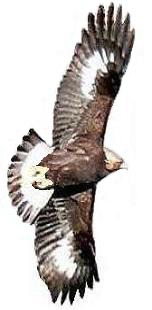American Kestrel
(Falco sparverius)
Migration Timeframe:
Kestrels get moving early and can be spotted anytime after the first couple of
weeks of August. Their big push is usually in September, peaking by mid-Sept.
Some years, “big days” may occur in early October (e.g. 2003), but usually Kestrel numbers
slowly decline during October. A few Kestrels, very few that is, may still migrate in
November (e.g. 3 in 2004, 5 in 2005, 0 in 2006 and 1 in 2007).
|
Year |
Peak Week |
Avg |
|
2002-2007 |
Sep 15-21 |
1,308 |
|
Year |
Peak Week |
Count |
|
2008 |
Sep 29-Oct 05 |
1,657 |
|
Year |
Earliest
Obs |
Count |
Year |
Latest
Obs |
Count |
|
2002-2007 |
Aug 31 2007 |
47 |
2002-2007 |
Nov 18 2007 |
1 |
|
2008 |
Aug 25 |
15 |
2008 |
Nov 1 |
3 |
Where to Watch:
The Kestrels are fond of hovering over the open fields in front of
the hawkwatch area as well as along the cliff edge, watching
intently for a quick snack. At Hawk Cliff we often see them passing
through in groups comprising 10, 20 even 40 birds all at the same
time!!
High Counts:
We set a new 1-hour record count for Kestrels on October 2 2008
beating the previous record of 200 that was originally set back on
the same day October 2 2003....exactly 6 years ago!.
|
1-Year |
Count |
1-Month |
Count |
|
2006 |
5,076 |
Sep 2006 |
4,398 |
|
1-Day |
Count |
1-Hour |
Count |
|
Sep 20 2006 |
1,187 |
Oct 02 2008 |
209 |
Yearly Totals:
The 2008 yearly total fell between the 10-Year and the 5-Year averages...making
this past season a very "average" year for Kestrels. :).
(averages are based on 1998-2007 and 2002-2007 counts).
|
Year |
Count |
Year |
Count |
Year |
Count |
|
1995 |
3,218 |
2000 |
1,640 |
2005 |
3,986 |
|
1996 |
2,187 |
2001 |
1,510 |
2006 |
5,076 |
|
1997 |
2,953 |
2002 |
3,320 |
2007 |
4,431 |
|
1998 |
853 |
2003 |
4,533 |
2008 |
3,781 |
|
1999 |
2,593 |
2004 |
2,677 |
2009 |
N/A |
|
10-Yr Avg |
5-Yr Avg |
|
3,062 |
4,141 |
Interesting Facts:
-
Northern populations winter far south of breeding grounds.
-
Wintering grounds throughout Ontario and the U.S., Bermuda, the Caribbean islands and Cuba.
-
Some central and southern latitude adults are resident on breeding
territories and may remain together all winter.
-
Juveniles reared at similar latitudes may disperse short distances
or remain near natal areas.
-
Of the migratory Kestrels, females tend to winter further south than males.
-
Males average smaller than females but with some overlap
|
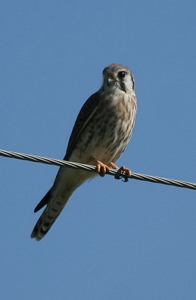
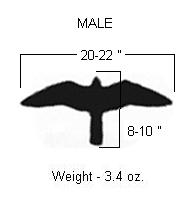
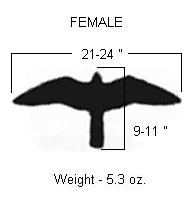
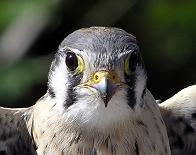
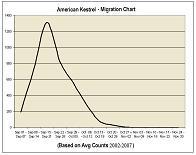
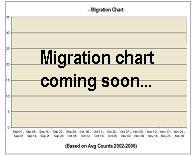
|
